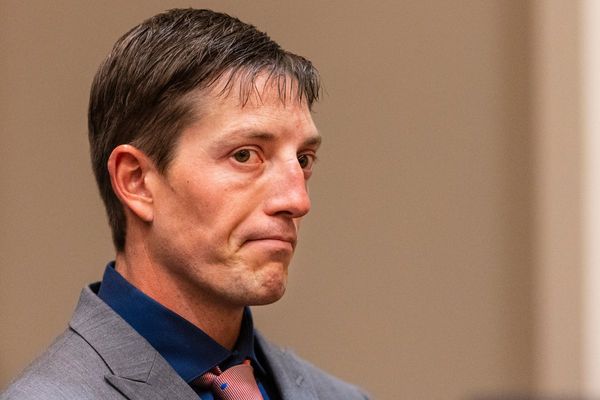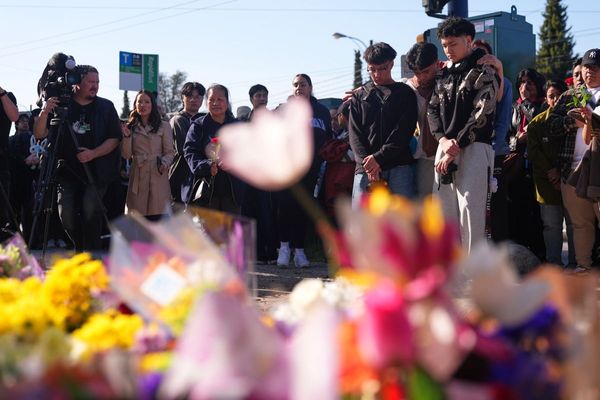
Who knows the names of the women killed by Jack the Ripper? This is the point of Hallie Rubenhold’s Baillie Gifford prize-winner The Five (Doubleday): how little, in all the past gory century of Ripperology, anyone has cared to know about the women he murdered. And so, painstakingly, she tells their stories: Mary Ann “Polly” Nicholls, Annie Chapman, Elizabeth Stride, Catherine Eddowes, Mary Jane Kelly – their complicated, world-torn lives, their loves and disappointments. Rather than dwell on the violence of their leaving, she notices what they left – a linsey frock, a large pocket, one red mitten – and dedicates her book to them.

Lisa Taddeo did not have Rubenhold’s archival challenges but she spent nearly a decade talking to and even living alongside the subjects of Three Women (Bloomsbury), two of whose real names she doesn’t use, in order to produce her novelistically propulsive, empathetic account of desire, “angerlove”, compromise and corrosive gender imbalance in three sexual lives.
The power imbalance in Kerry Hudson’s memoir, Lowborn (Chatto), is both individual – a childhood surrounded by chaotic, often substance-altered adults – and societal. For her, the combination meant: “1 single mother; 2 stays in foster care; 9 primary schools; 1 sexual abuse child protection inquiry; 5 high schools; 2 sexual assaults; 1 rape; 2 abortions; my 18th birthday.” Also occasional homelessness and eight out of 10 on the Adverse Childhood Experiences scale. She escaped into the middle-class world of novel writing; in Lowborn she returns, a refugee afflicted with survivor guilt, looking for memories and raging at how little has changed.

“If you carry no safety within you, then you are never really safe,” writes Rhik Samadder in I Never Said I Loved You (Headline). For him there was childhood abuse, but neither professional nor personal inquiry; his response was to shut down his emotions to such an extent that weeks of memory disappeared. Depression and self-harm made his life “a catalogue of starless nights”. His attempts to remember, and chaotic blunderbuss-like conversations with his loving, brave and gloriously eccentric mother, are frank, vulnerable and often snortingly funny.
Lemn Sissay’s account of his childhood, My Name Is Why (Canongate), is more powerful for being deliberately sparse; also for its juxtaposition of what he remembers – as an Ethiopian child fostered by a white Baptist fundamentalist and initially loving family – with the official paperwork that surrounds such an arrangement, especially when it breaks down. The family went on to have three of their own offspring and at 12 Sissay was returned to care, when contact ceased. Damage and grief sweep through the silences. The occasional thoughtful insights from a social worker or a psychologist, and the discovery that his mother wanted him back (he had been told she had abandoned him), are all the more moving because Sissay did not know until years later. His is a different erasure, that of corroboration: “Staff don’t take photographs … This is how you quietly deplete the sense of self-worth deep inside a child’s psyche. This is how a child becomes hidden in plain sight.”

There are photographs in Laura Cumming’s gorgeously written On Chapel Sands (Chatto), but also plenty of secrets, many teased out – an art critic doing what she does best – by looking at those images. On Chapel Sands a child went missing; that child was Cumming’s mother, who was soon found, but explaining the background to the disappearance took a lifetime of shifting discoveries.
In 1797-98, in the wilds of the West Country, two poets invented not only themselves, but an entire movement: Romanticism. In The Making of Poetry (William Collins), Adam Nicolson follows Wordsworth and Coleridge along deer-haunted ridges and into moonlit hollows, recreating supper parties giddy with their discovery of each other and of themselves. Here “The Ancient Mariner” was written, as well as “Kubla Khan” (though it wasn’t published for another 18 years) and “Tintern Abbey”, here the first edition of the Lyrical Ballads was strung together on a skein of idealism and gathering pain. Nicolson is accompanied by artist Tom Hammick, whose gorgeous woodcuts are made from trees the men might have walked under at Alfoxden.

“What constitutes a self-determined life? A life well lived?” Sinéad Gleeson asks in Constellations, her memoir-in‑essays (also poems, observations, exhortations). She has had more than her share of physical pain: arthritis, surgery, leukaemia, a car accident, hips shattered by childbirth. And through it she refracts hard-earned anger – about medical dismissal of female suffering, the misogyny of the Irish state, the politicisation of the female body – but also lyrical beauty and ambition. “Weigh the world up / Like a bag of water / Try to guess the weight of life you want,” she writes in “A Non-letter to My Daughter (named for a warrior queen)”. “Assume there is goodness all around / unless there is not, / and even then, be the goodness.”
• Save up to 30% on the books of the year at guardianbookshop.com







